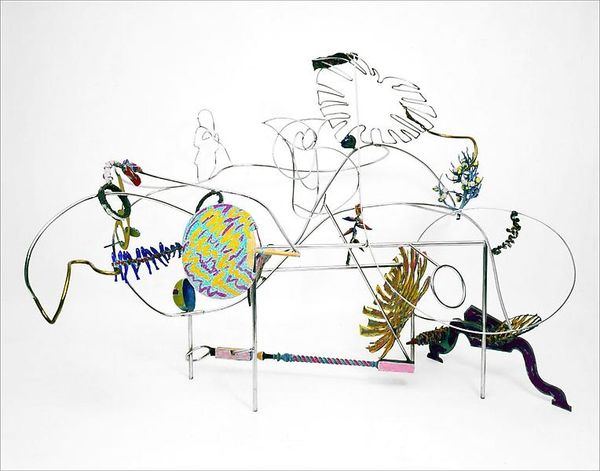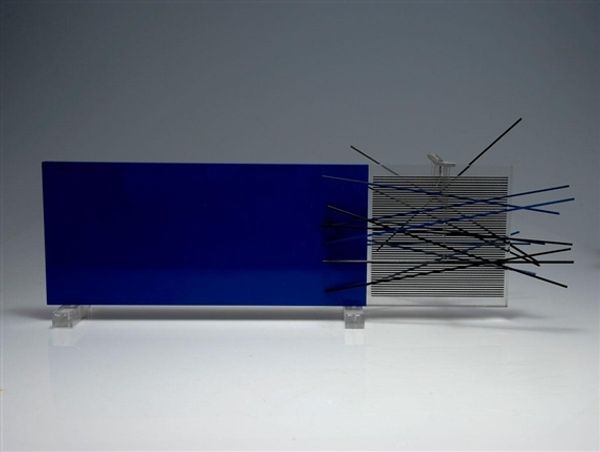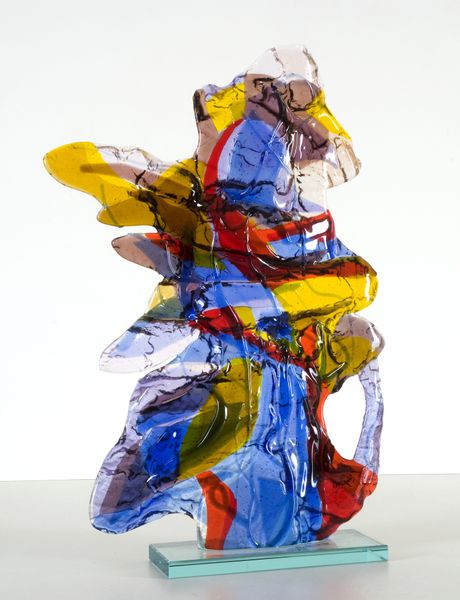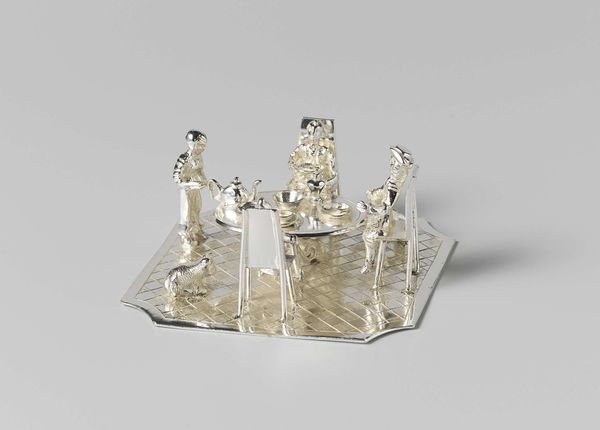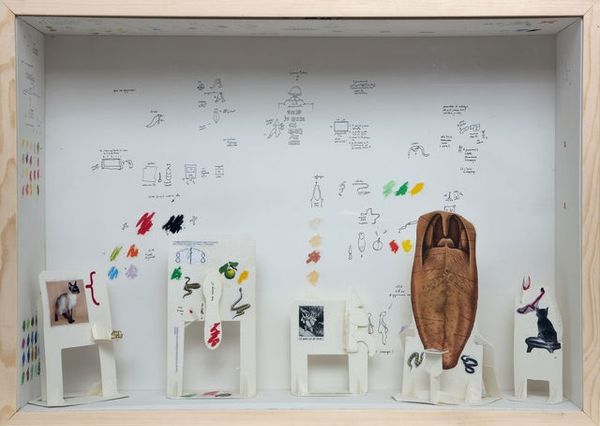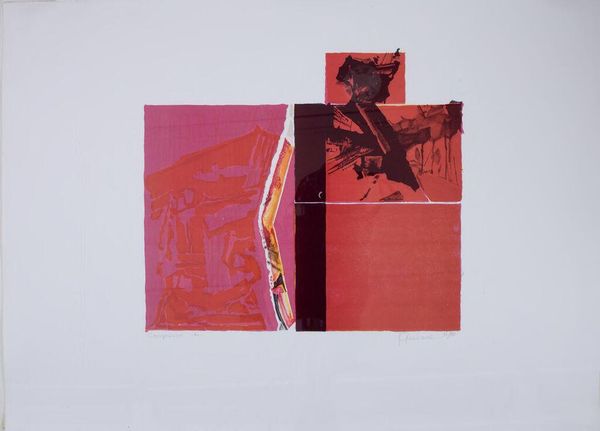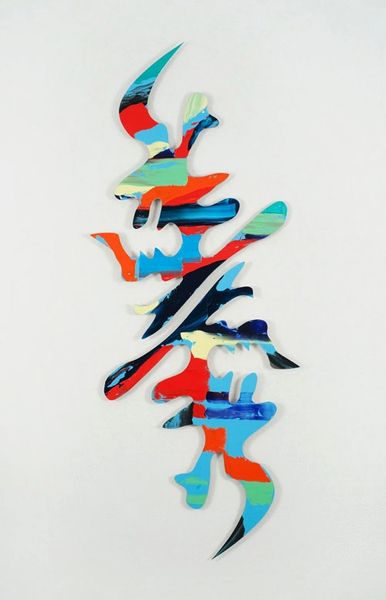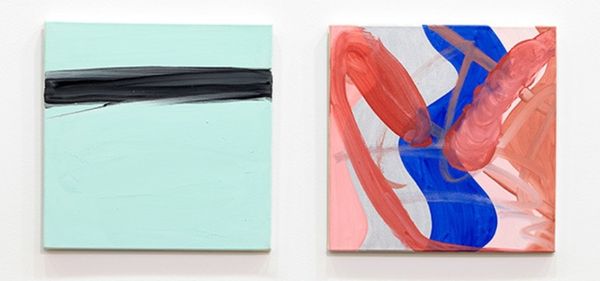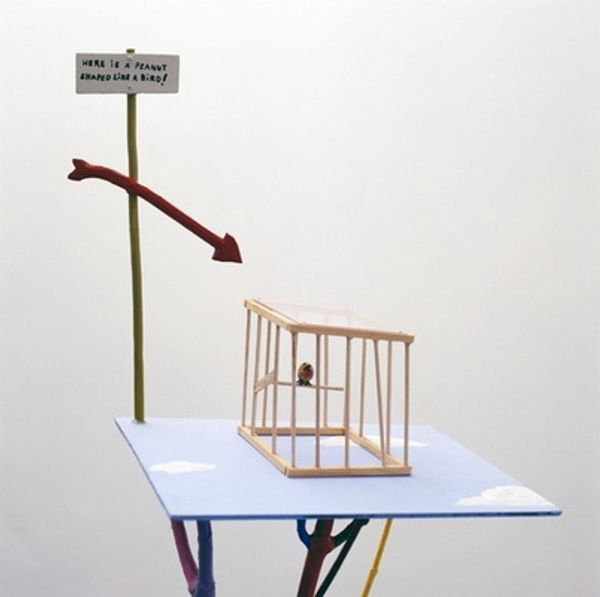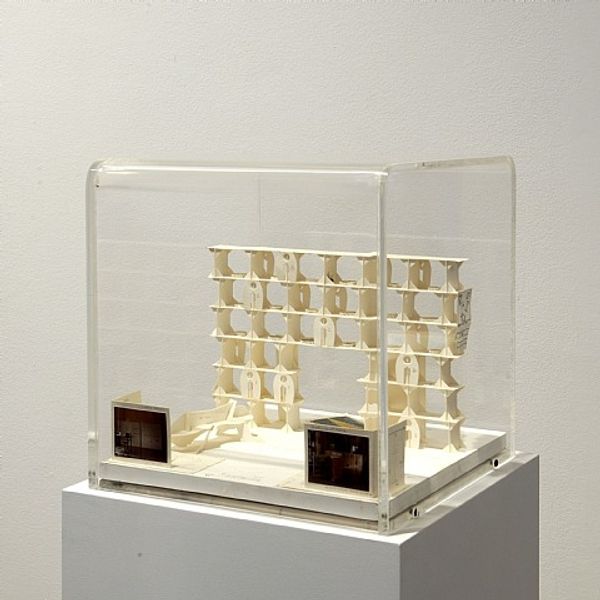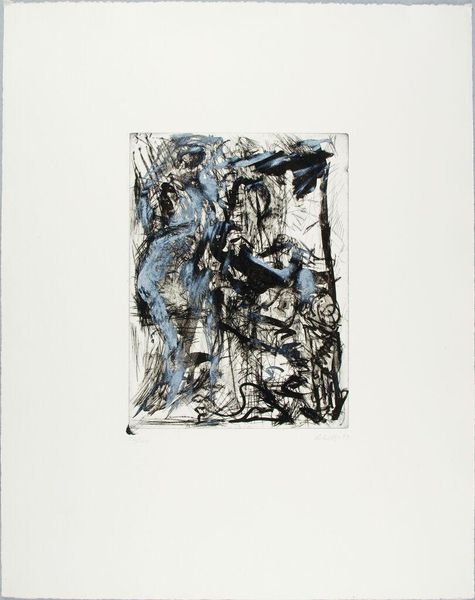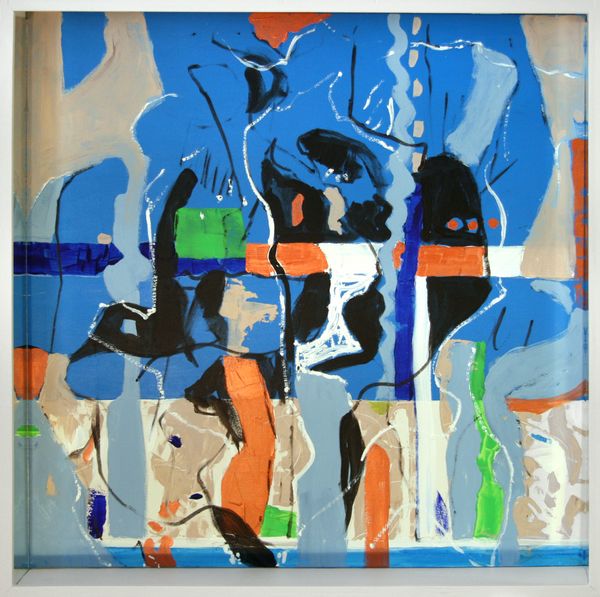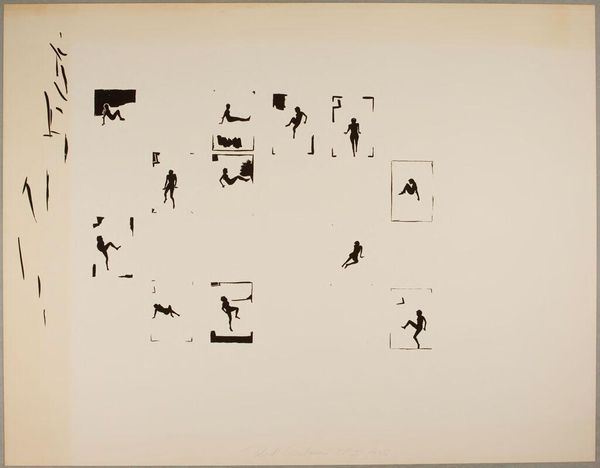
mixed-media, glass, sculpture, installation-art
#
mixed-media
#
conceptual-art
#
appropriation
#
figuration
#
glass
#
sculpture
#
installation-art
#
pop-art
Copyright: Oyvind Fahlstrom,Fair Use
Editor: We're looking at Oyvind Fahlstrom's "Green Pool" from 1969, a mixed-media piece using glass and sculpture. There's something unsettling about the playful arrangement of these colorful figures posed atop what appears to be a pool of water, and it's hard to determine their actual intentions. What do you make of this piece? Curator: The unease you feel is quite deliberate. Fahlstrom often used playful imagery to confront serious socio-political issues. Considering its creation during the Vietnam War era, and that Fahlstrom was influenced by semiotics, do you think these colorful figures and cartoonish shapes of soliders and predators are as innocent as they seem? What could this suggest in terms of the way the public viewed violence at the time? Editor: So, you’re suggesting the 'Green Pool', the literal water, is meant to be more symbolic of war than of, say, leisurely recreation? The animals and soldiers are stand-ins? Curator: Precisely! And not just war in a general sense. Think about who was being represented in mass media at the time. The media's impact on constructing perceptions and manipulating public sentiment were of great concern to Fahlstrom. Now, how does knowing this affect your understanding of the materials he’s chosen to employ here, such as using toy-like figurines atop what could either be something soothing, or toxic? Editor: Knowing this context reframes everything. The playful figures, contrasted against the ‘toxic waste’ of the water suggests manipulation of reality and popular belief using ‘toys,’ to present something quite deadly! Curator: Exactly. It speaks volumes about the seductive and misleading nature of power structures and dominant narratives, wouldn't you agree? Editor: Yes, definitely! Thanks to understanding Fahlstrom's socio-political concerns, what once looked playful now conveys something quite menacing. Curator: And that's the power of art, isn't it? To question, challenge, and make us see the world, and ourselves, differently.
Comments
No comments
Be the first to comment and join the conversation on the ultimate creative platform.

